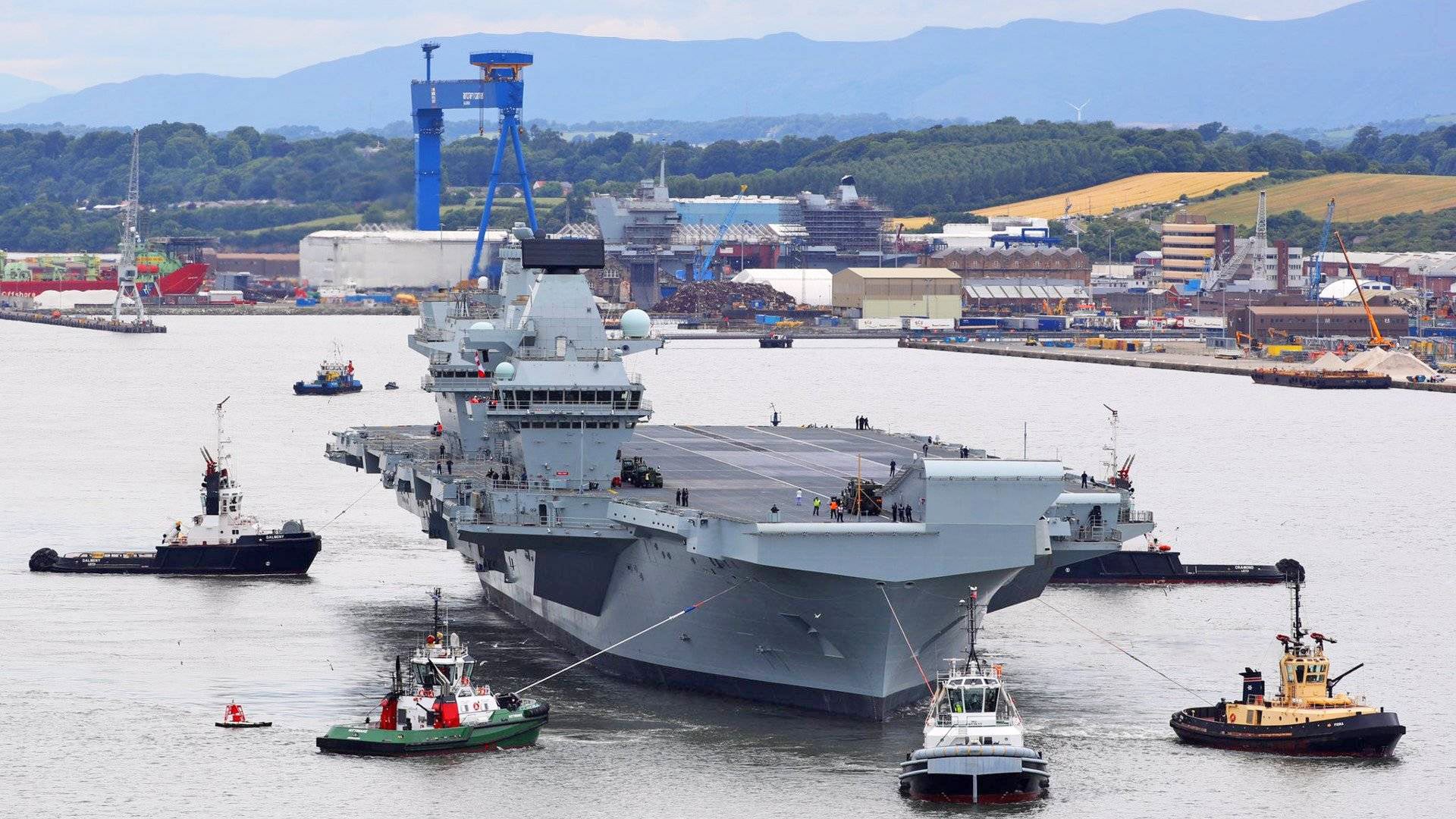The aircraft carrier HMS Queen Elizabeth has set sail for the first time ever for her first sea trials, an event the United Kingdom, its allies, and potential opponents such as Russia will surely be watching intently. However she performs, the Royal Navy still has a long way to go in getting the flattop combat ready, especially given that it has not yet taken delivery of a substantial number of the ship’s most important weapon, the F-35B.
On June 26, 2017, Queen Elizabeth pushed off from her moorings at Rosyth Dockyard on the Firth of Forth in Scotland. The ship will undergo approximately six weeks of tests and evaluations in the North Sea before returning to the shipyard to correct any issues. Afterwards, she is set to move to her home port of Portsmouth and enter service.
“I think there are very few capabilities, by any country, that are as symbolic as a carrier strike capability,” Royal Navy Captain Jerry Kydd, the carrier’s commanding officer, said ahead of the event, according to the BBC. “Submarines you can’t see, but these are very visible symbols of power and power projection.”

It’s true that aircraft carriers are especially symbolic of a country’s military power. The simple movement of U.S. Navy carriers toward a hot spot is often enough to prompt speculation of increased tensions or an imminent conflict. The Queen Elizabeth-class, which will also include the HMS Prince of Wales, will be the Royal Navy’s first aircraft carriers since the service decommission HMS Ark Royal in 2011 in no small part due to budget cuts. The U.K. Ministry of Defense also plans to retire HMS Ocean, a smaller helicopter carrier and current Royal Navy flagship, in 2018, some time before either of the new flattops are ready for action.
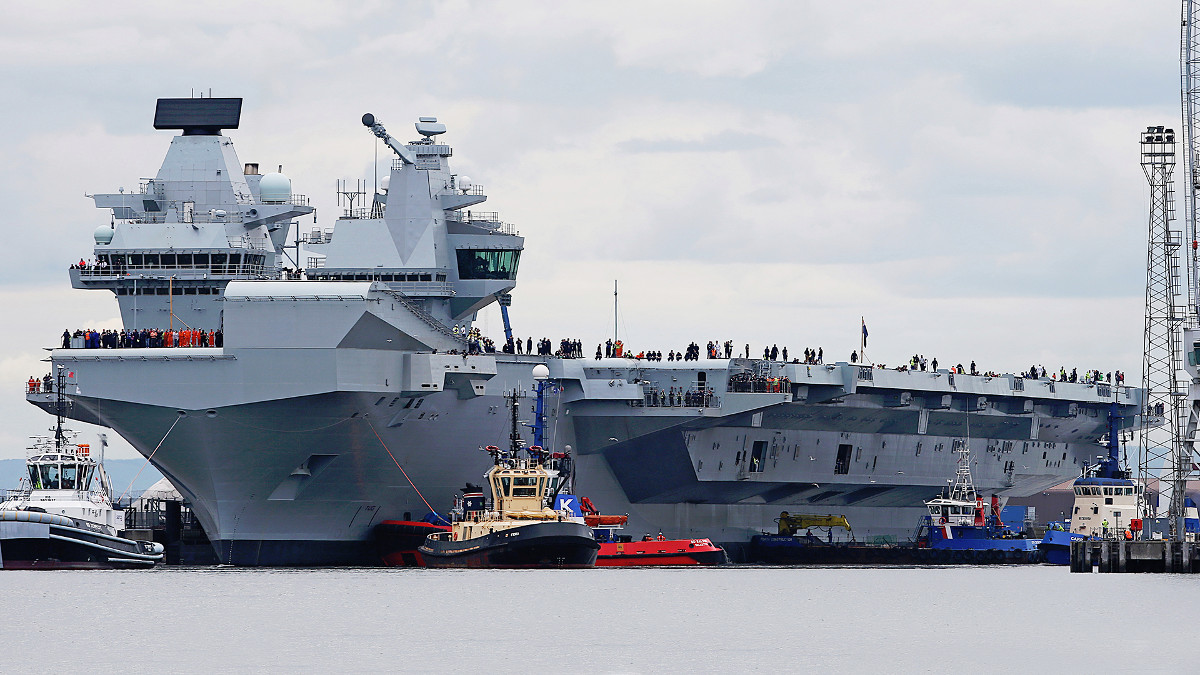
If all goes according to plan, they will be significantly more capable than either of these older ships. Ark Royal had a displacement of 22,000 tons and an overall length of just less than 690 feet. By comparison, the Queen Elizabeth-class have a displacement of 65,000 tons and a length of more than 900 feet, which will make them the largest ships to ever serve with the Royal Navy. The new British flattops are still smaller than American supercarriers, with the up-coming Ford-class having a displacement of approximately 100,000 tons and a length of nearly 1,110 feet.
They will use aski jump to help launch their F-35Bs, and the jets will recover via vertical landing or a short rolling landing when the mission is over . While this configuration has traditionally meant it takes longer for multiple planes to get airborne, the ship’s large, open flight deck has the potential to speed up the process considerably.
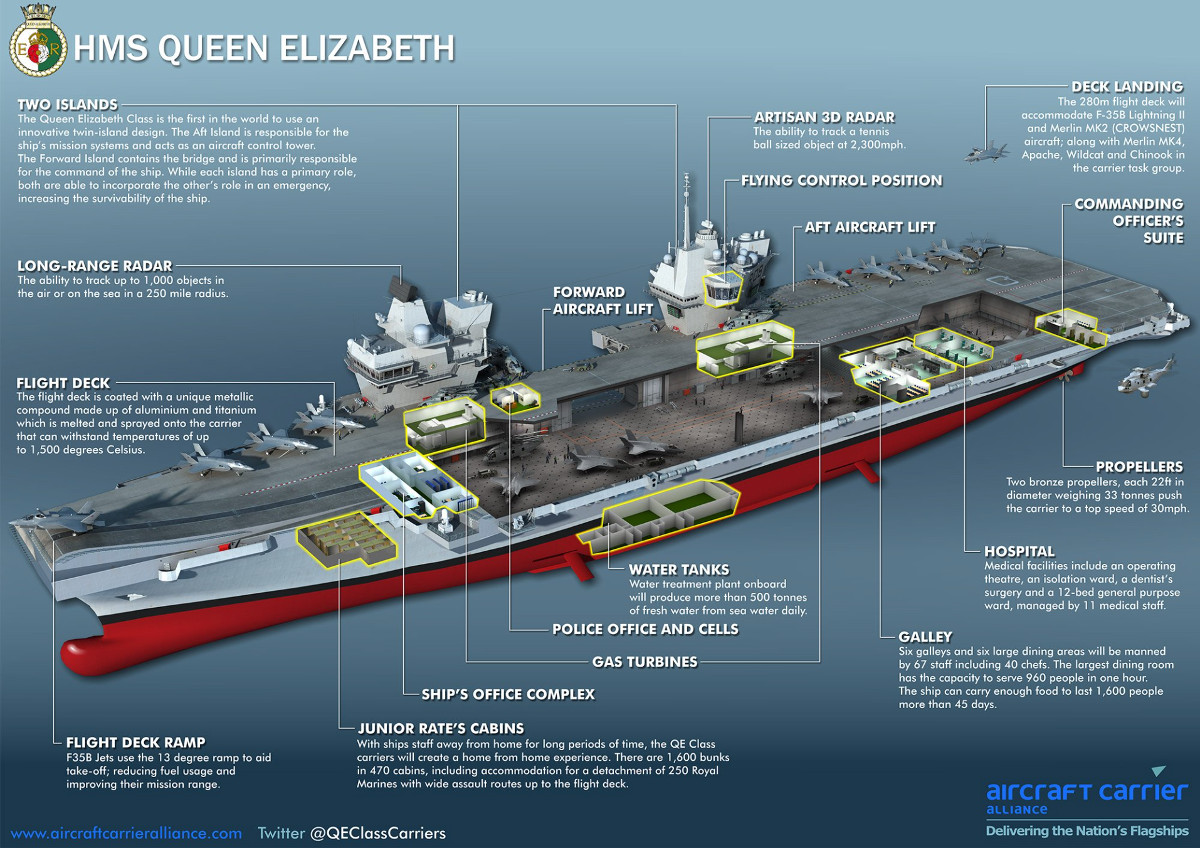
Given the sheer size of the ship the Royal Navy and shipbuilding consortium Aircraft Carrier Alliance (ACA) – a public-private partnership that includes the U.K. Ministry of Defense, BAE Systems, Babock International, and Thales UK – have already had to spend considerable time planning just how to get Queen Elizabeth out of port. They even made a more than two minute long animated video to show the process of moving the ship from Rosyth into the Firth of Forth and finally out onto the open seas. A small armada of nearly a dozen tugs got her out of the dockyard, where she had less than 150 feet of clearance with the seabed and at times came within less than 120 feet of the shore. Afterwards, she needed to wait for the tide to go down in order to squeak under four fixed bridges before finally making it out onto the North Sea.

The ship’s design had a folding masthead specifically to deal with this issue, as well. The U.K.’s Ministry of Defense had to spent considerable time and money in order to upgrade Her Majesty’s Naval Base Portsmouth in order to accommodate the new ships, including dredging more than 81 million cubic feet of clay, sand, and gravel from both the harbor itself and the channel that connects it to the sea.
“They are the biggest warships ever built for the Royal Navy,” the Royal Navy’s official website for Queen Elizabeth declares. “Four acres of sovereign territory, deployable across the globe to serve the United Kingdom on operations for 50 years.”
Since the ship itself, as well as its first trip to sea, is so monumental, there is an expectation that the Russians will at least shadow the carrier’s trials. The Royal Navy routinely tails the Kremlin’s warships as they pass through the North Sea and the English Channel. But in light of cool relations between the Kremlin and NATO as a whole over Russia’s continued interference in the conflict in Ukraine and support for Syrian dictator Bashar Al Assad, there is also the concern the Russian forces may be more inclined to snoop more closely on the evaluations or even harass the ships. Since 2014, Russian aircraft have performed unsafe maneuvers near both NATO warships and planes in and around the Baltic and Black Seas and other locales.
But Captain Kydd and the rest of Queen Elizabeth’s crew, as well as the Royal Navy as a whole, may be more focused on performing well in front of domestic critics. In March 2017, the U.K.’s National Audit Office, a top government watchdog akin to the U.S. Government Accountability Office, reported that the aircraft carrier program was entering “critical phase” and still had a number of risks left to mitigate. The sea trials are already three months behind schedule due to largely unspecified technical problems.
A big question surrounds the basic issue of whether or not ships like Queen Elizabeth are worth the cost – 6 billion pounds for the pair, or more than $7.5 billion at the exchange rate at the time of writing – given the United Kingdom’s strategic priorities and the kind of conflict’s the country’s military has been involved in for years. The wars in Iraq and Afghanistan were and continue to be characterized in large part by manned and unmanned aircraft and special operations forces. Budget austerity and fears about the United Kingdom’s planned exit from the European Union, more commonly known as Brexit, only raise additional questions about whether the country can really afford two supercarriers and enough planes and helicopters to make them truly useful.
This latter point may be the most important factor. At the 2017 Paris Air Show, Royal Navy Rear Admiral Keith Blount, the Fleet Air Arm’s Head of Fighting Arm, disclosed that the Queen Elizabeth’s full air wing would ultimately include just 24 short/vertical takeoff and landing capable F-35Bs, even though it could accommodate as many as 36 of the jets. A typical U.S. Navy carrier air wing has between 44 and 48 F/A-18C/D Hornets or F/A-18E/F Super Hornets at present. There’s a question of whether the ship can even support
In addition, he added that the ships may operate instead as amphibious assault ships without any Joint Strike Fighters at all. In this “Littoral Manoeuvre” or “Lit-M” configuration, British Army Apache gunships and Royal Navy Wildcat light helicopters would provide support for up to 12 transport choppers. The entire force would be able to rapidly deploy up two companies of Royal Marines in an initial assault during expeditionary operations. HMS Ocean has performed similar duties in the past, including during the NATO-led intervention in Libya in 2011.
However, as Queen Elizabeth takes to the sea, the United Kingdom effectively has no aircraft for it or Prince of Wales. The Royal Air Force and Royal Navy together expect to receive a total of 138 F-35B Joint Strike Fighters from American plane-maker Lockheed Martin. As of 2017, the country had received or had on order less than 10 of the jets, all of which are set aside for developmental and training purposes. British pilots have also been training on American aircraft.
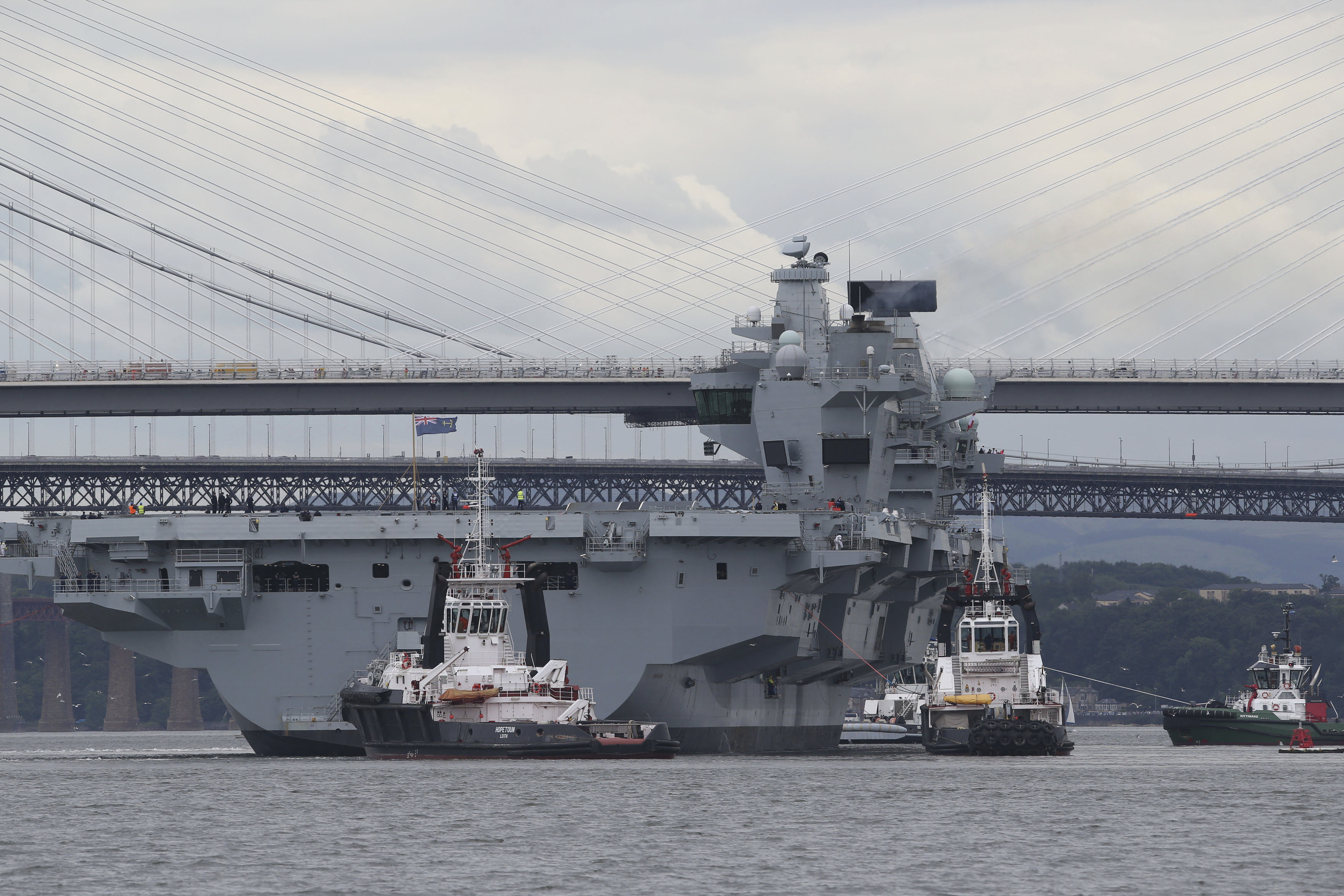
Delays and cost overruns have bedeviled the American end of the F-35 program. Even though Lockheed and the Pentagon say they are now making steady progress, both the U.S. Air Force and Navy have begun investing considerable time and money into upgrading existing fourth-generation fighter aircraft. The U.K’s Ministry of Defense has declined to release an estimate on how much its expects the full fleet of F-35s will ultimately cost, despite reports in February 2017 that Great Britain had just contributed another 4 billion pounds to the program.
There is the very real potential the British may decide to trim their own purchases, too. Earlier in June 2017, The Times of London
reported that the Royal Air Force was pushing for a reduction in the planned purchases of F-35Bs in order to free up funds for the conventional F-35A model. The proposal would potential cut the total number of B models to as few as 48. “Decisions on the precise details will be taken at the appropriate time to ensure the most appropriate capability and the best value for money,” was all the U.K.’s Ministry of Defense would say on the record to The Times.
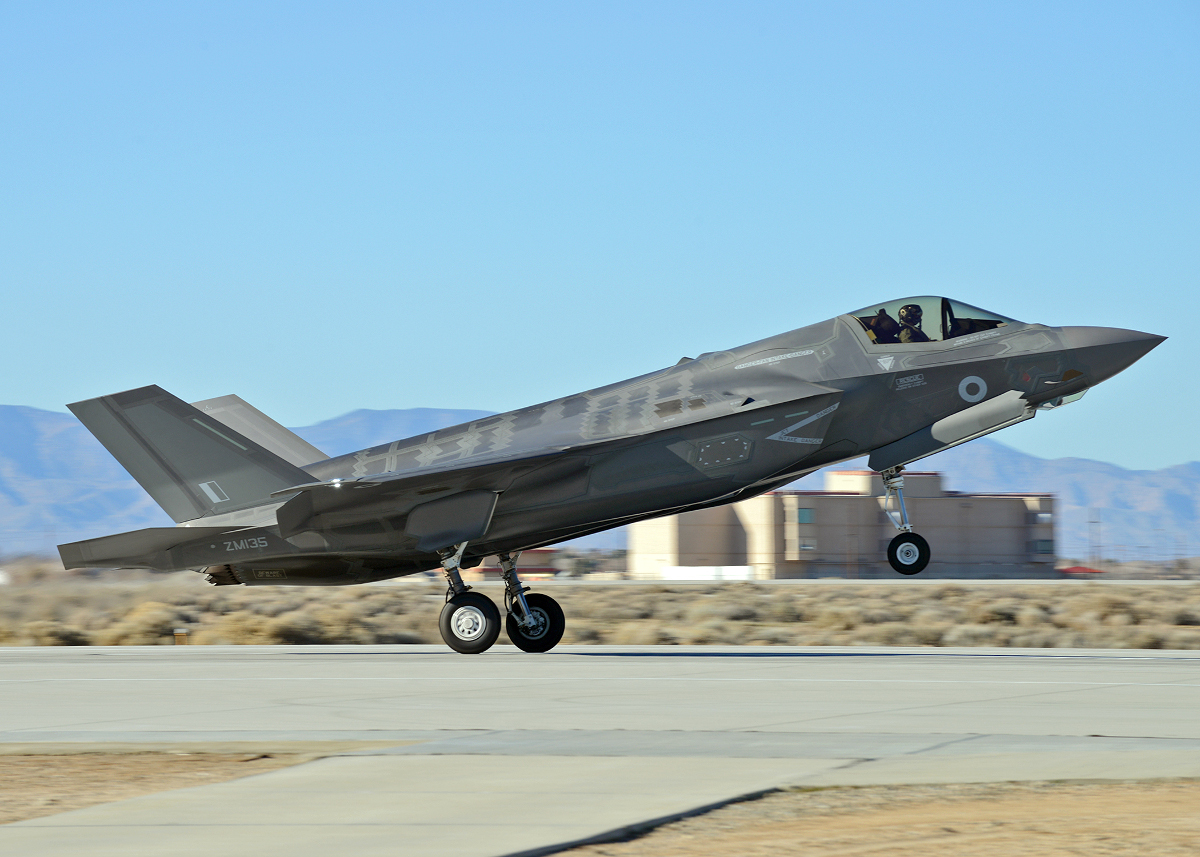
A fleet of 48 F-35Bs would prevent both Queen Elizabeth and Prince of Wales from operating with a full complement of strike aircraft, based on the official plan, especially since its unlikely the Royal Navy would have all of its Joint Strike Fighters embarked at any one time. The Royal Navy has already said what it would do with its first 42 F-35Bs, which were supposed to be in operation by 2023. Under the scheme 24 will be used for the deployment on carriers and 18 will be used for training.
Relying on a ski jump and vertical landings instead of catapults and arresting gear to launch and recover aircraft, the ships require a short take-off and vertical landing optimized aircraft like the Joint Strike Fighter’s B version, too. So if something happens to the Royal Navy’s F-35B plans, there are no readily available alternatives. The service sold off its entire remaining fleet of perfectly capable Harrier jump jets after announcing it would retire Ark Royal in 2010. There’s no getting them back, either, since the U.S. Marine Corps promptly snatched up the aircraft to help sustain its own Harrier fleet.
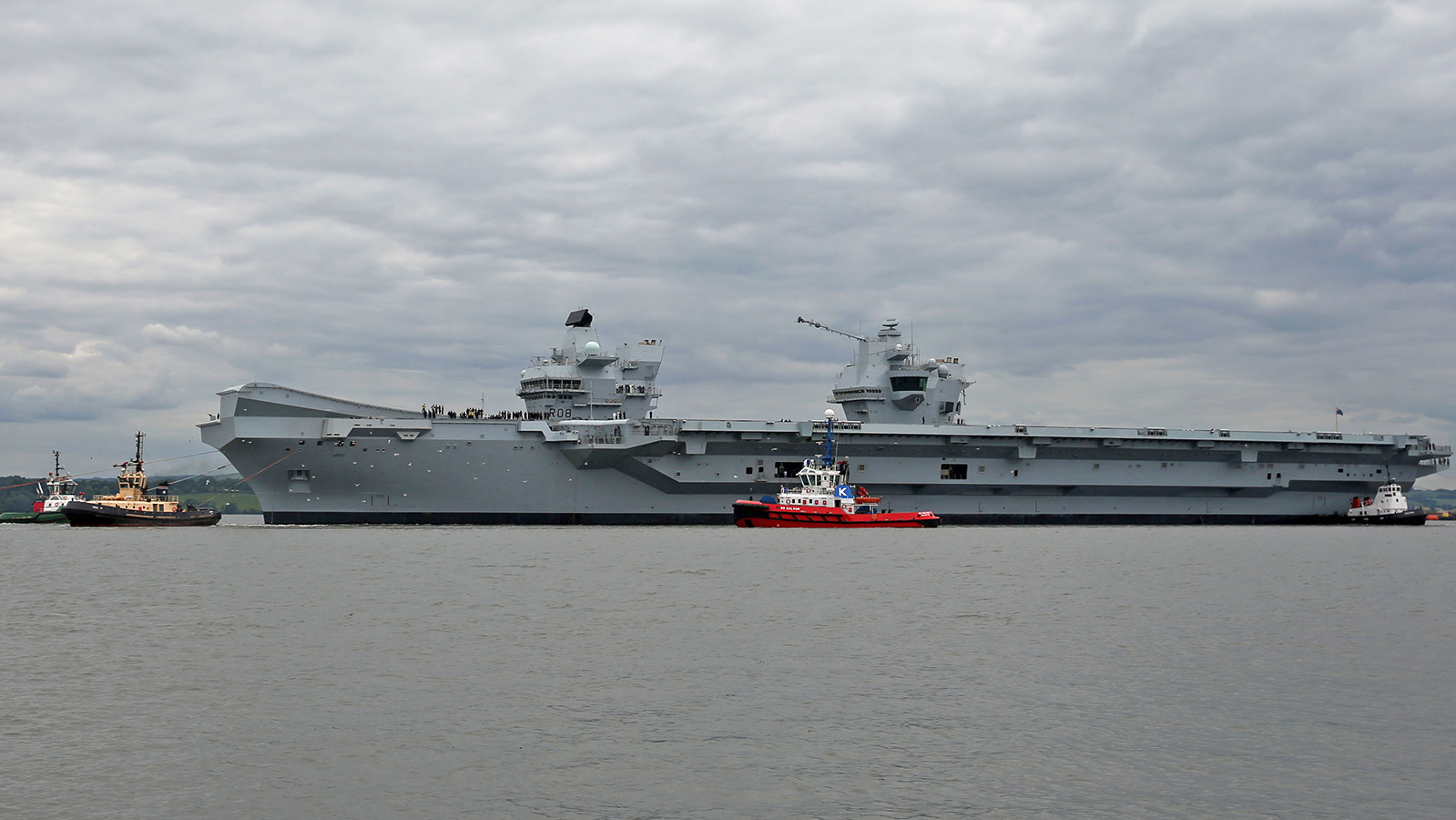
So, it’s more than a little ironic that the Royal Navy has turned to the American Marines to help make up this obvious and apparently long expected short-fall in actual aircraft. In December 2016, the two parties agreed that the Marines, who also fly the B model and have declared their jets have reached initial operational capability, would operate from the deck of Queen Elizabeth during her first operational patrol. Rear Admiral Blount confirmed this plan in his presentation in Paris. It’s not clear when that might be, but the U.K. Ministry of Defense insist the ship and its air arm will be fully operational by 2026.
Even with a full contingent of F-35s, the rest of the Air Wing, made up entirely of helicopters, might not be able to keep up or adequately support the ship’s fixed wing operations. Unlike the U.S. or the French and their E-2 Hawkeye radar aircraft to provide airborne early warning functions, the British carriers will rely on Merlin Helicopters carrying the mechanically-scanned Crowsnest radar for air and surface search duties. The Queen Elizabeth’s air arm lacks any airborne tankers or carrier onboard delivery aircraft, too. This could hamper offensive operations and slow resupply for such a big ship, especially in time critical situations. Though an expensive option, the Royal Navy could possibly piggyback on the U.S. Navy’s CMV-22B Osprey program, which that service hopes will perform the critical carry onboard delivery mission.
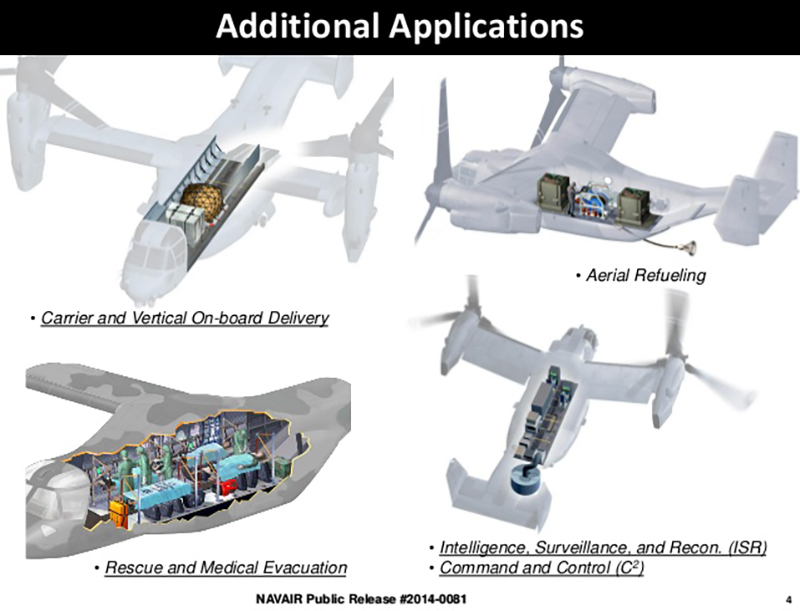
The Osprey could also perform tanker duties for F-35Bs and even embarked helicopters. It could also perform the airborne early warning function in a far more capable manner than the low-flying and short-ranged Merlin. There are configurations in the works for the Osprey to do just that and the UK previously considered an airborne early warning aircraft based on the V-22. Once again, the investment may be steep, but the Osprey is uniquely suited to enable the Queen Elizabeth class in so many ways, and not procuring the type will handicap these ships and their aircraft.
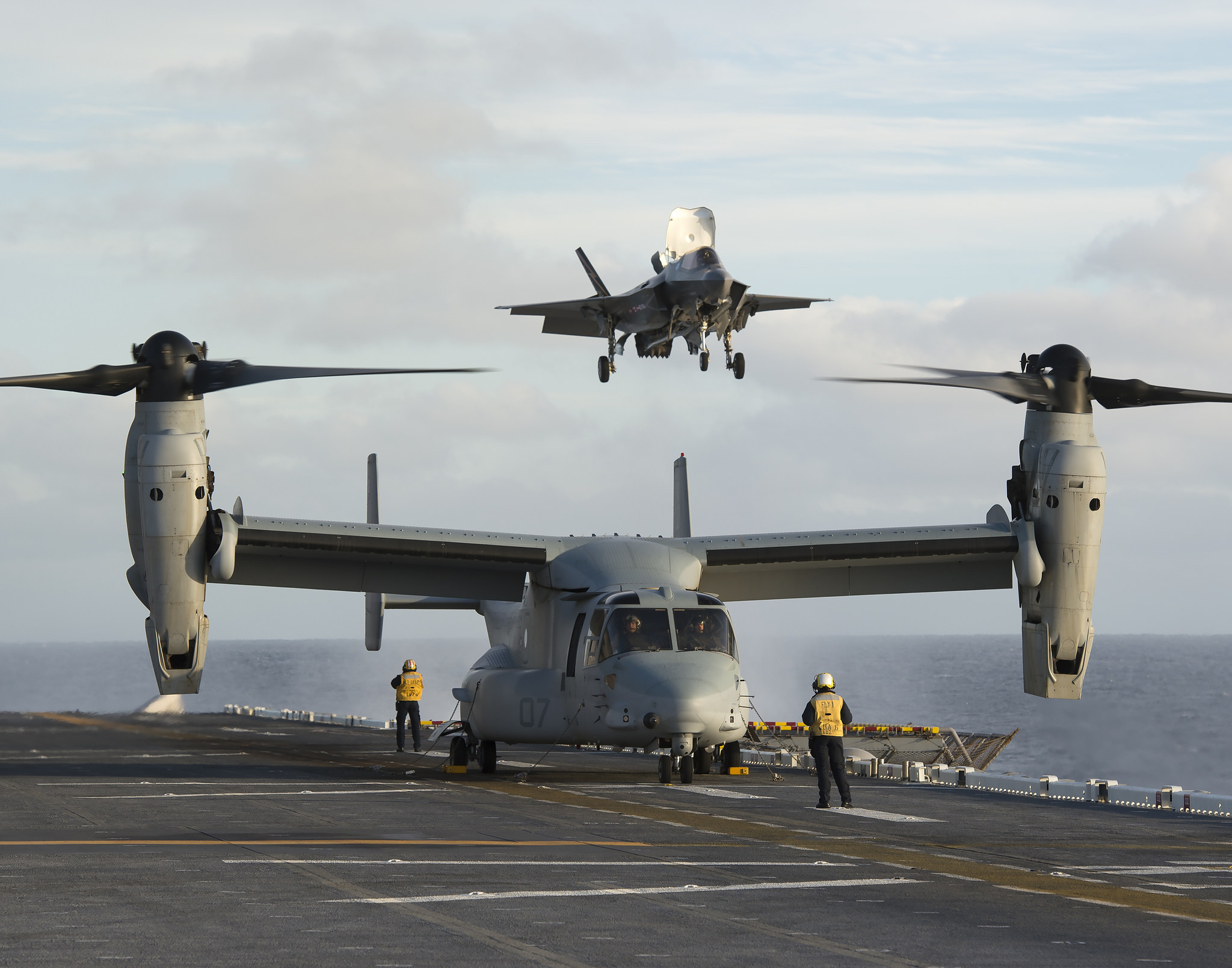
The idea of a supercarrier without aircraft may not be what anyone had in mind, though. There were rumors earlier in June 2017 that the situation had led to dangerously low morale among the sailors chosen to join Queen Elizabeth’s first crew. A report in The Telegraph based on statements from unnamed sources blamed some of the delays in getting the ship out for sea trails on service members “abandoning” the assignment because it was “dull” and what was effectively a skeleton crew meant more work for everyone.
According to ACA, the two new carriers will ultimately have a full crew of 1,600, including air wing personnel during cruises, but Queen Elizabeth is heading out with its core crew of 700 for her initial evaluation which won’t include any air wing personnel. Even taking into account its smaller size, compared to a typical U.S. Navy carrier with its embarked air wing, both of these figures seem low. A Nimitz-class carrier has a crew of 3,200 without the air wing, which raises the final total to over 5,500 personnel.
Beyond the issues with carrier’s aviation element, there is just the matter of what it takes to support one carrier, let alone two. No matter how their air wings are configured, the Royal Navy would need to commit significant numbers of escorting ships, such as destroyers, frigates, logistical ships and submarines to each deployment. A typical U.S. Navy carrier battle group includes a guided missile cruiser, three destroyers, and at least one Los Angeles-class attack submarine, not mention the logistical ships that support the Strike Group. As of 2017, the Royal Navy had six Type 45 destroyers and seven Astute– and Trafalgar-class attack submarines in total, plus another 13 Type 23 frigates. This all calls into question the ability of the Royal Navy to operate both ships by itself and may imply a need for increased cooperation with allies, such as the United States, for expeditionary or forward-deployed operations.

Perhaps this might help explain why ACA has been particularly proud of the ship’s ability to feed the full crew complement. An official infographic noted each carrier would be able to store 64,800 eggs, 28,800 strips of back, and 12,000 cans of baked beans, key components of a traditional English breakfast. The ability of the ship’s kitchens to churn out meals for the 700 initial crew within 90 minutes – or just 45 minutes with personnel at “action stations” – was among nine major official figures BBC cited in its profile of the ship’s first sea voyage. With its key capabilities under seemingly perpetual review, there might not be much else to talk about.
In short, the Queen Elizabeth-class has a lot to offer, but a lot of its actual operational capability will depend on how the Royal Navy decides to operate both ships. And for Ministry of Defense’s budget constrained force, a new model of close cooperation or shared operation with allies might become essential for getting the most of these carriers.
Contact the author: joe@thedrive.com
